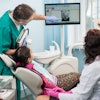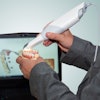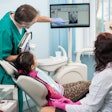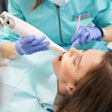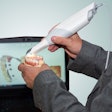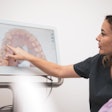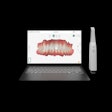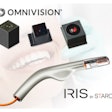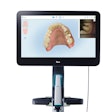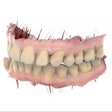
Intraoral scanners have been predicted to entirely displace conventional impressions in the near future. But which scanners are the most accurate for implants? In a new study, researchers put four scanners through their paces to find out.
Researchers from Italy reported excellent results with all scanners in their study published in BMC Oral Health (June 2, 2017). However, they found significant differences in a key measure of accuracy that favored one of the four scanners tested.
"Since in digital dentistry modeling and milling depend essentially on the data acquired through the optical impression, the use of the most accurate introral scanners would seem preferable, in order to improve the quality of fit and marginal adaptation of the implant-supported prosthetic restorations," the authors wrote.
The study was led by Mario Imburgia, DDS, PhD, of Palermo, Italy. Dr. Imburgia is in private practice in Palermo and Milan.
Trueness and precision
An intraoral scanner projects a beam or a light grid onto the surface of a tooth or implant and uses high-resolution cameras to capture the distortion of the beam as it hits the tooth or implant. Software processes the captured data and creates a 3D model.
“The use of the most accurate intraoral scanner would seem preferable, in order to improve the quality of fit and marginal adaptation of the implant-supported prosthetic restorations.”
Trueness and precision are the two elements of accuracy in a scanner. Trueness is the ability of a measurement to match the actual value of the quantity being measured, while precision is the ability of a measurement to be consistently repeated: in other words, the ability of the scanner to ensure repeatable outcomes, when employed in different measurements of the same object.
The researchers sought to compare the trueness and precision of four intraoral scanners in a partially edentulous maxillary (PEM) model with three implants and a fully edentulous maxillary (FEM) model with six implants.
They prepared the two gypsum models with the implant analogues, then screwed on polyether-ether-ketone cylinders. They scanned the models with a reference scanner (ScanRider, V-Ger) and four intraoral scanners (CS 3600, Carestream Dental; Trios 3, 3Shape; Cerec Omnicam, Dentsply Sirona; True Definition, 3M). The reference scanner used was an industrial optical desktop scanner.
The researchers took five scans of each model per scanner. They loaded the captured image datasets into reverse-engineering software, then superimposed them on each other to create a reference model to evaluate trueness. To measure precision, the images were superimposed on each other within groups.
In the partially edentulous model category, the researchers reported that the CS 3600 had the best trueness (see table below). They found significant differences between the CS 3600 and the other three scanners, as well as between the Trios 3 and Omnicam and also the Trios 3 and True Definition. For all the scanners, the trueness values obtained in the PEM were significantly better than those obtained in the fully edentulous model.
| Results in the partially and fully edentulous models | ||||
| CS 3600 | Omnicam | Trios 3 | True Definition | |
| PEM | ||||
| Trueness | 45.8 ± 1.6 µm | 58.8 ± 1.6 µm | 50.2 ± 2.5 µm | 61.4 ± 3.0 µm |
| Precision | 24.8 ± 4.6 µm | 26.3 ± 1.5 µm | 24.5 ± 3.7 µm | 19.5 ± 3.1 µm |
| PEM | ||||
| Trueness | 60.6 ± 11.7 µm | 66.4 ± 3.9 µm | 67.2 ± 6.9 µm | 106.4 ± 23.1 µm |
| Precision | 65.5 ± 16.7 µm | 57.2 ± 9.1 µm | 31.5 ± 9.8 µm | 75.3 ± 43.8 µm |
For precision in the PEM, True Definition had the best results, but the researchers found no statistically significant differences among the different scanners.
In the FEM category, they found significant differences for trueness between CS 3600 and True Definition, Trios 3 and True Definition, and Omnicam and True Definition. For precision, however, they found no statistically significant differences among the different scanners.
For three of the scanners -- CS 3600, Omnicam, and True Definition -- the values obtained in the PEM were significantly better than those obtained in the FEM; no significant differences were found for Trios 3.
The CS 3600 gave the best trueness results, the authors wrote; therefore, it should be preferable for use in similar clinical settings.
However, they expressed concern about the fact that the scanning accuracy was higher in the PEM than in the FEM.
"This indicates that, despite the considerable progress made by the latest generation [of intraoral scanners], scanning a fully edentulous patient remains more difficult than to scan an area of more limited extent, and, consequently, the design and milling of full-arch restorations on the basis of these scanning data may still present problems," they wrote.
New scanners
The authors noted two limitations of their study:
- The study was an in vitro study. The authors recommend that the results obtained here should be necessarily translated into the clinical setting and validated in vivo.
- Some limitations may be related to the sample size (n = 5 scans for each scanner), even if this seems to be a convenient sample size taking into account similar studies.
Further studies with larger sample size are needed, the authors concluded. They also recommended that new studies compare latest-generation scanners that would provide even more interesting data to clinicians.
"The significant technological advances made in the last months have allowed manufacturers to launch a series of new, extremely powerful devices, in order to make possible the intraoral scanning of full arches in dentate and fully edentulous (implant) patients," the authors wrote.
